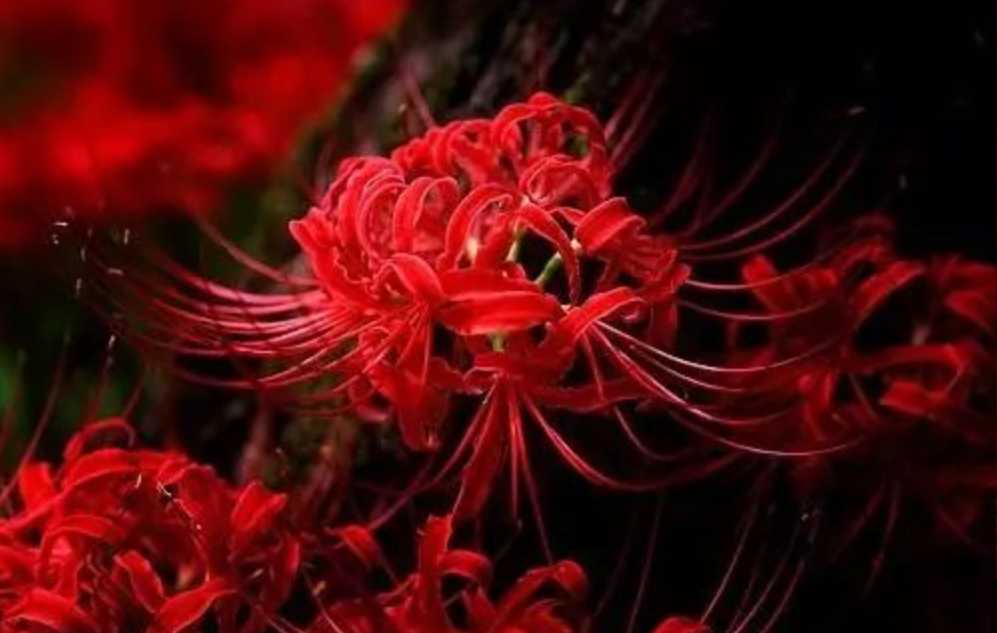The Red Spider Lily earns its name from its unique flower structure: six narrow, recurved petals adorned with wavy edges, resembling spider legs splayed in mid-motion. The deep crimson hue of the petals—sometimes accented with paler veins—contrasts sharply with the golden stamens that extend outward, creating a flame-like effect. Each flower cluster (umbel) rises 30–60 centimeters tall on a leafless scape, as the plant’s strap-shaped leaves wither before blooming, giving it the eerie nickname "flower without leaves, leaves without flowers." The blooms last for about two weeks, releasing a subtle, musky fragrance that attracts pollinators like bees and butterflies.
In Buddhist and Shinto traditions, the Red Spider Lily is associated with the afterlife, often planted near cemeteries to guide spirits. Its Japanese name "Higanbana" translates to "flower of the equinox," symbolizing the boundary between life and death. In Chinese folklore, it represents lost memories and unfulfilled love, while in Korean culture, it signifies the arrival of autumn. Ecologically, the plant thrives in moist, well-drained soils, often naturalizing in woodlands and along riverbanks. Its bulbs store energy through winter, and the species is highly adaptable, tolerating both sun and shade. Though not endangered, habitat loss and urbanization threaten wild populations, prompting horticultural appreciation to preserve its cultural and botanical legacy. As a living paradox of beauty and transience, the Red Spider Lily continues to inspire awe as nature’s most haunting floral emblem.








